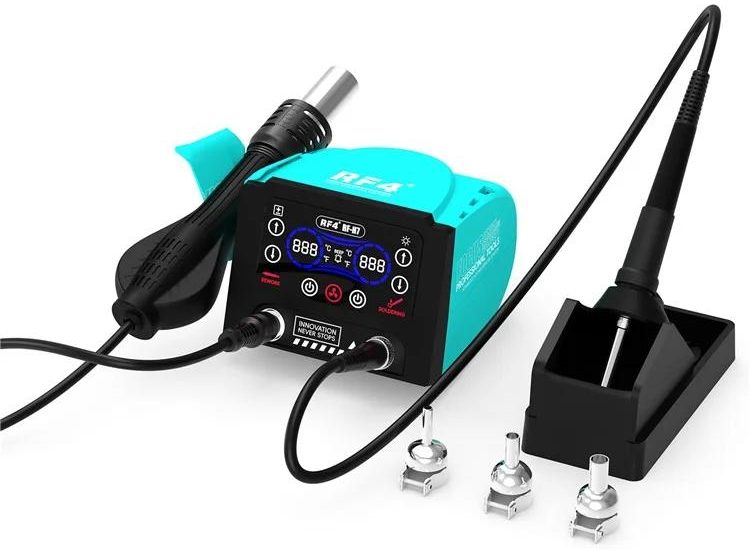Soldering is a fundamental skill in electronics, crafting, and DIY projects. Whether you’re a seasoned professional or a hobbyist, having the right soldering iron with tips is crucial to achieving precise and reliable results. In this blog, we’ll explore the importance of selecting the right soldering iron, how to manage soldering iron temperature, and the benefits of a portable soldering iron for on-the-go projects.

Soldering Iron with Tips: The Foundation of Quality Work
A soldering iron with tips is the cornerstone of any soldering task. The tips are the part of the iron that comes into direct contact with the solder and the components, so choosing the right one is essential for different types of work:
Variety of Tips: Soldering irons come with various tips, including chisel, conical, and bevel. Each type is designed for specific tasks. For example, chisel tips are great for general-purpose soldering, while conical tips are ideal for precision work on small components.
Interchangeable Tips: Some soldering irons come with interchangeable tips, allowing you to switch between different styles depending on the task. This flexibility is particularly useful for professionals who work on a variety of projects.
Durability and Quality: The quality of the soldering iron tip directly impacts the durability and performance of your soldering work. High-quality tips are resistant to corrosion and oxidation, ensuring a longer lifespan and more consistent results.
Tip Maintenance: Regular maintenance of soldering tips is important for optimal performance. Cleaning the tips after use and using tip tinner can extend their life and improve the quality of your soldering joints.
Soldering Iron Temperature: The Key to Precision
Controlling soldering iron temperature is vital for achieving strong, reliable solder joints. Different materials and components require different temperatures, making it important to have a soldering iron with adjustable temperature settings:
Temperature Control: A soldering iron with adjustable temperature control allows you to set the iron to the exact temperature needed for your specific task. This is particularly important when working with sensitive components that can be damaged by excessive heat.
Optimal Soldering Temperature: For most electronics work, the ideal soldering temperature ranges between 350°C and 400°C (660°F to 750°F). However, the exact temperature may vary depending on the type of solder and the components being used.
Avoiding Cold Joints: A soldering iron that is too cool can result in cold joints, where the solder doesn’t properly adhere to the components. This can cause weak connections and lead to project failures. Ensuring your iron is at the correct temperature prevents this issue.
Preventing Damage: On the other hand, too high of a temperature can damage sensitive components and cause the solder to flow too quickly, leading to sloppy joints. Adjustable temperature control helps avoid these problems by allowing you to fine-tune the heat.
Portable Soldering Iron: Soldering On-the-Go
For those who need to work on projects outside of a traditional workspace, a portable soldering iron is an invaluable tool. Here’s why it’s a must-have for fieldwork, quick repairs, and on-the-go soldering:
Portability and Convenience: Portable soldering irons are lightweight and easy to carry, making them perfect for field repairs, remote projects, or any situation where access to a traditional soldering station is limited.
Battery-Powered Options: Many portable soldering irons are battery-powered, offering the freedom to work without needing a power outlet. Some models also come with USB charging, adding to their convenience.
Rapid Heating: Despite their compact size, many portable soldering irons heat up quickly, allowing you to start working almost immediately. This feature is particularly useful for quick repairs or when you need to work on multiple tasks in different locations.
Versatility: Portable soldering irons often come with a range of tips, making them versatile tools for various applications, from small electronics repairs to crafting projects.
Conclusion
Whether you’re tackling intricate electronics projects, performing quick repairs on the go, or engaging in hobbyist soldering, having the right tools makes all the difference. A soldering iron with tips offers the versatility you need, while managing soldering iron temperature ensures precision and prevents damage. A portable soldering iron adds convenience and flexibility, making it easier to work wherever your projects take you.
Investing in a high-quality soldering iron and the right accessories will elevate your work, allowing you to achieve professional results every time. Happy soldering!